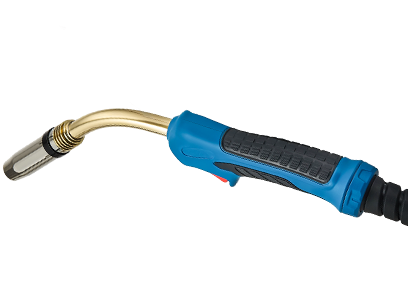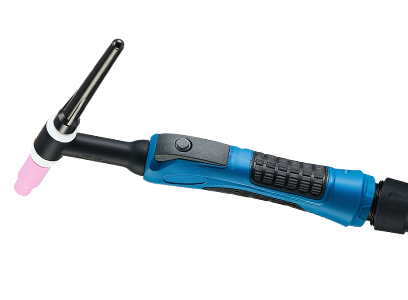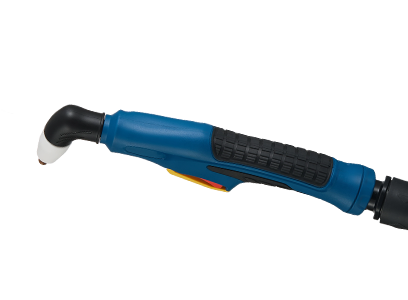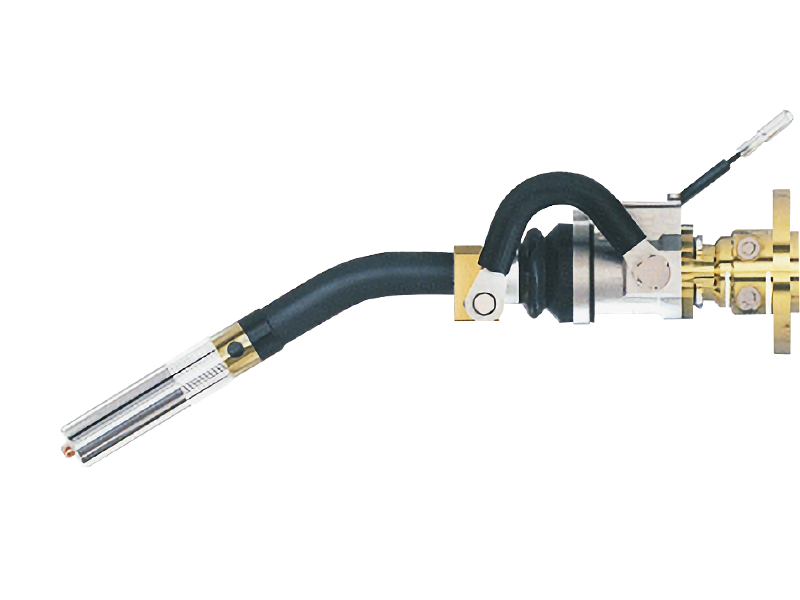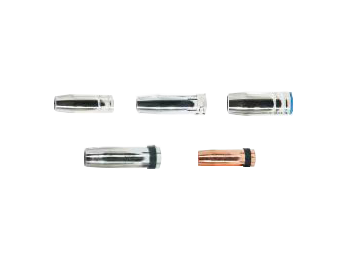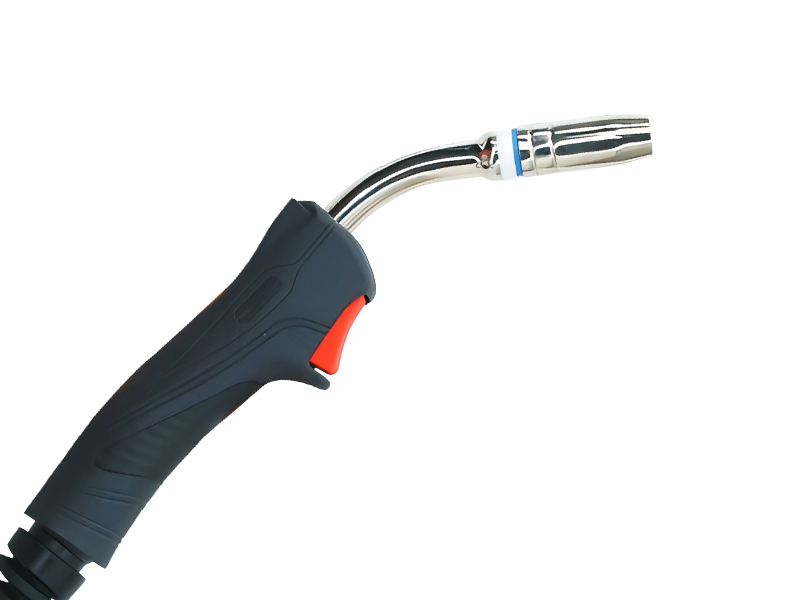Troubleshooting Common Issues with MIG Gun Parts: A Comprehensive Guide
Troubleshooting Common Issues with MIG Gun Parts: A Comprehensive Guide
When it comes to MIG welding, the MIG gun is arguably one of the most important tools in your arsenal. It is crucial for ensuring a smooth, efficient weld. However, just like any machinery, MIG guns can experience problems that may hinder their performance. In this guide, we will walk you through the most common issues associa
Troubleshooting Common Issues with MIG Gun Parts: A Comprehensive Guide
When it comes to MIG welding, the MIG gun is arguably one of the most important tools in your arsenal. It is crucial for ensuring a smooth, efficient weld. However, just like any machinery, MIG guns can experience problems that may hinder their performance. In this guide, we will walk you through the most common issues associated with MIG gun parts and provide practical troubleshooting tips to ensure your welding projects go off without a hitch.
Table of Contents
1. Understanding MIG Guns and Their Components
2. Common Issues with MIG Gun Parts
2.1 Poor Wire Feed
2.2 Overheating
2.3 Erratic Arc Behavior
2.4 Improper Gas Flow
3. Troubleshooting Poor Wire Feed Issues
3.1 Inspecting the Drive Rollers
3.2 Checking the Wire Tension
4. Resolving Overheating Problems
4.1 Assessing the Duty Cycle
4.2 Cleaning and Maintenance
5. Fixing Erratic Arc Behavior
5.1 Electrode and Contact Tip Inspection
5.2 Power Supply Evaluation
6. Ensuring Proper Gas Flow
6.1 Regulator and Hose Checks
6.2 Fitting Tightness
7. Preventative Measures for MIG Gun Maintenance
8. Conclusion
9. FAQs
1. Understanding MIG Guns and Their Components
MIG (Metal Inert Gas) welding is a process that involves using a continuous feed of filler metal (wire) to create a weld. The MIG gun is the interface between the welder and the material being welded. It consists of several key components: the nozzle, contact tip, liner, and drive rollers. Understanding how these parts work together is essential for troubleshooting any issues that may arise.
2. Common Issues with MIG Gun Parts
While MIG guns are designed for durability, they can face several common issues. Let’s delve into these problems and how they affect your welding operations.
2.1 Poor Wire Feed
One of the most frequent issues encountered with MIG guns is a poor wire feed. This can lead to inconsistent welds, which can compromise the integrity of your work. Typically, this problem can manifest as either the wire not feeding at all or feeding erratically.
2.2 Overheating
Overheating can be caused by a variety of factors, including excessive duty cycles and inadequate cooling. Not only does this affect your gun’s performance, but it can also damage components, leading to costly repairs.
2.3 Erratic Arc Behavior
An erratic arc can make it difficult to achieve a clean, consistent weld. This issue can often be traced back to poor connections or faulty components within the MIG gun.
2.4 Improper Gas Flow
Proper gas flow is essential for shielding the weld from contaminants. Issues with gas flow can lead to poor weld quality and increased spatter.
3. Troubleshooting Poor Wire Feed Issues
Addressing poor wire feed issues promptly can enhance your welding experience significantly.
3.1 Inspecting the Drive Rollers
The drive rollers are responsible for feeding the wire through the gun. If they are worn or damaged, they may not grip the wire properly. Inspect the rollers for wear and replace them if necessary. Additionally, ensure they are clean and free of any debris.
3.2 Checking the Wire Tension
The tension applied to the wire can greatly impact the feed rate. If the tension is too loose, the wire may slip; if it’s too tight, it can cause jams. Adjust the tension to ensure a smooth feed.
4. Resolving Overheating Problems
Overheating is a serious issue that can lead to further complications if not addressed.
4.1 Assessing the Duty Cycle
The duty cycle refers to the amount of time a welder can operate effectively without overheating. If you’re pushing your MIG gun beyond its duty cycle, consider allowing it to cool down or switching to a unit with a higher capacity.
4.2 Cleaning and Maintenance
Regular cleaning can help prevent overheating. Dust and debris can accumulate and obstruct airflow, causing the gun to overheat. Clean the gun frequently, paying special attention to the cooling vents.
5. Fixing Erratic Arc Behavior
To achieve a consistent weld, addressing erratic arc behavior is essential.
5.1 Electrode and Contact Tip Inspection
The contact tip is crucial for conducting electricity to the wire. Inspect it for wear, as a worn tip can lead to poor arc stability. Replace the tip if it shows signs of damage.
5.2 Power Supply Evaluation
A faulty power supply can lead to inconsistent voltage, affecting arc stability. Ensure that the power supply is functioning correctly and providing stable voltage.
6. Ensuring Proper Gas Flow
Gas flow is vital for shielding the weld.
6.1 Regulator and Hose Checks
Inspect the gas regulator for any signs of malfunction, and ensure the hoses are not kinked or damaged. A blockage in the hose can restrict gas flow, compromising weld quality.
6.2 Fitting Tightness
Ensure that all fittings are tight and secure. Leaks can lead to inadequate gas flow, which can affect the quality of the weld.
7. Preventative Measures for MIG Gun Maintenance
Implementing preventative measures can help reduce the likelihood of future issues with your MIG gun.
- **Regular Inspections**: Frequently inspect all components for wear and damage.
- **Routine Cleaning**: Maintain cleanliness to ensure optimal performance.
- **Proper Storage**: Store the MIG gun in a dry, safe environment to prevent damage.
8. Conclusion
Troubleshooting issues with MIG gun parts can seem daunting, but with the right knowledge and approach, you can identify and fix common problems efficiently. Regular maintenance and understanding your gun’s components are key to ensuring a successful welding experience. By following the guidance provided in this article, you can enhance not only the performance of your MIG gun but also the quality of your welding projects.
9. FAQs
What should I do if my MIG gun is not feeding wire correctly?
Check the drive rollers for wear and ensure the wire tension is set correctly.
How often should I clean my MIG gun?
Regular cleaning is recommended after every use to prevent debris buildup.
What are the signs of overheating in a MIG gun?
Signs include a burnt smell, discoloration of components, and reduced performance.
How can I improve gas flow with my MIG gun?
Ensure that all hoses and regulators are leak-free and that fittings are secure.
What can cause erratic arc issues?
Common causes include a faulty contact tip, inadequate power supply, or poor wire feed.
By addressing these challenges head-on and applying the solutions outlined in this guide, you will ensure that your MIG welding projects run smoothly and efficiently.
TAG:
Related Posts
MIG Welding Robots vs. Traditional Methods: A Comprehensive Comparative Analysis
Table of Contents
1. Introduction to MIG Welding and Traditional Methods
2. Understanding MIG Welding Technology
3. Benefits of Using MIG Welding Robots
3.1 Efficiency and Speed
3.2 Precision and Quality
3.3 Enhanced Safety
4. Overview of Trad

